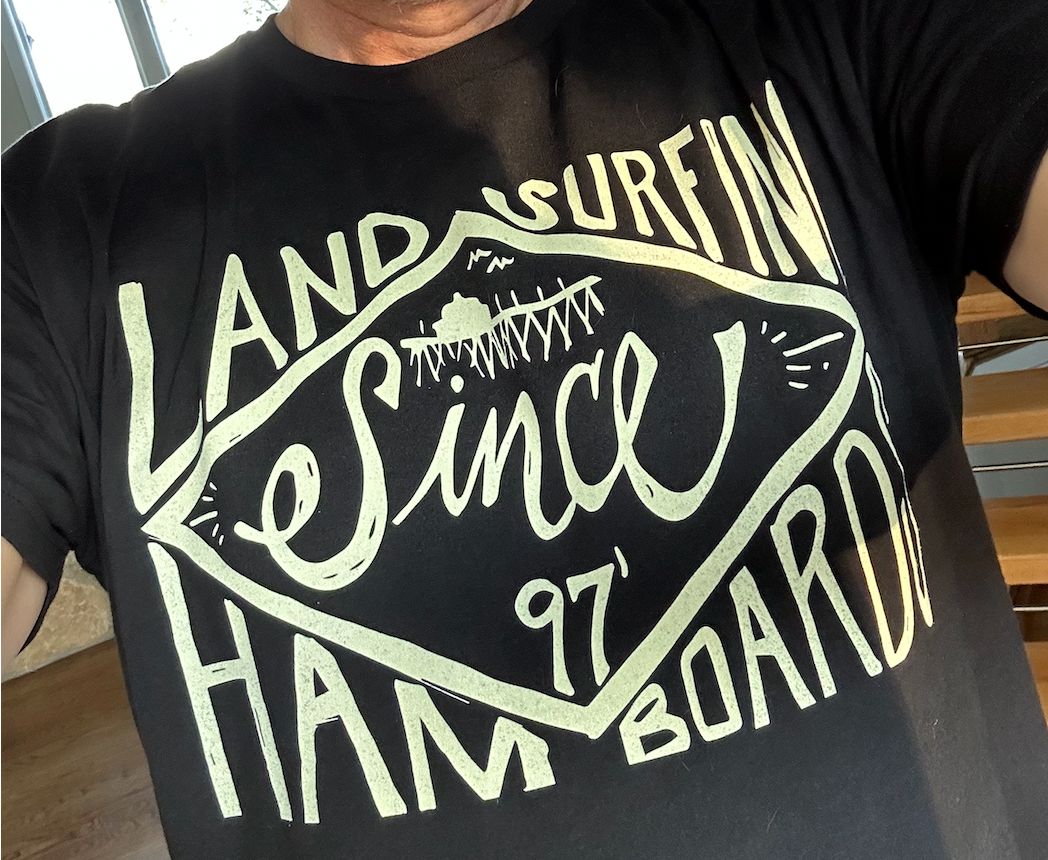
Hamboards' Guide to Skateboard Lingo
Share
Skateboard Styles: Understanding the Different Riding Techniques
By Don Sandusky – Hamboards
November 27, 2023, Revised May 2, 2025
Quick Summary
- Hamboards has been developing deep-lean longboard skateboards since 1997, with two US Patents and a third pending
- Any Longboard can be set-up with either Centered, Back Foot or Rear Axel centers of turning for different riding styles. Skilled riders can create speed maintaining forward force vectors with each carving motion and without pushing if they use the proper technique.
- Most Hamboards are centered (carving) longboards featuring HST 40° front and rear trucks
- With the HST truck system, all Hamboards can be set-up in either Centered, Rear Foot, Rear Axel or Hybrid configurations thereby allowing the rider to employ carving, surfskate and pumping riding styles... for example a 55°/20° is a Rear Foot, made for the "surfskate" style of riding, and it's relatively simple to change
- Hamboards does NOT make swivel truck-style surf skates
Skateboarding Styles Explained
Pushing
Pushing is the traditional skateboard propulsion method, using your strongest muscles (legs) for maximum leverage. The rider:
- Stands on the board with one foot
- Pushes off the ground with the other foot
- Must coordinate balance in four dimensions simultaneously (x, y, z and time)
- May use terms like "goofy," "regular," or "mongo" to describe their stance
- Advanced riders may use "skogging" (alternating left/right foot pushing) for distance skating
Carving
Carving propels the rider through deep, heel-to-toe turns without continuous foot pushing:
- Carving is done on a centered longboard with trucks set up for counter steering.
- The boards center of turning is located near the center of the wheelbase
- The front and rear pivot angles are usually identical but reversed. Pivot angle controls the relationship between leaning and turn; higher angles give more turn.
- Wedge risers can be used to increase the pivot angle, thereby increasing turning on the front and to reduce turning on the rear, but the opposite is not recommended
- Riders can maintain forward momentum by loading and unloading energy through powerful turns and creating forward force vectors with the front and rear trucks.
- The rider's center of gravity stays nearly perpendicular to the deck
- Board flex, lean ability, pivot axes, and front/rear steering are critical design factors
- Works best on longer decks (28+ inches)
- Carving can be done at high speeds (like 10 - 20mph)
Expert carvers:
- Crouch down and shift weight to the front foot for heel-side turns
- Stand up and shift weight to the back foot for toe-side turns
- Maintain a relatively steady head position while their body compresses and releases
- Avoid excessive ankle flexing or arm windmilling
- Often keep their front arm hanging straight down, shoulder stays just under chin and hand hangs over their front knee
- Create a graceful, pendulum-like rhythm

Surf Skating
Surf skating uses aggressive twisting turns for propulsion:
- Riders push the nose side-to-side in serpentine patterns and the rear foot pushes in opposite direction, in synchronized manner
- Acceleration comes from the board geometry and rider technique who is pushing the front, in the direction it’s turning and pushing the rear in the opposite direction which it is turning
- Most surf skates feature swiveling front trucks with less turning in the rear trucks
- The boards center of turning is located underneath the rear foot
- Works best on mid-sized decks (under 30 inches)
- Board lean is less important than in carving
- Surf skating is usually done at lower speeds (like 5 - 10mph)
- Swivel truck surf skates can be dangerous to unskilled riders at high speeds (over 15mph)
Skilled surf skaters:
- Accelerate through each turn
- Make aggressive, tight turns
- Can ride infinity loops without foot pushing
- Use ankle flexing to stay on the deck
- May use windmilling arms for centripetal force
Pumping
Pumping propels distance longboarders without foot pushing:
- Does NOT use swivel front trucks like surf skates
- The center of turning is located at or near the rear axel
- Relies on specialized board geometry: front trucks with 45-60° pivot angles (more steering) and rear trucks with 0-20° pivot angles (minimal steering)
- Some boards use a "dead rear truck" with zero steering
- Decks are typically mid-length with concave, narrow drop designs and grip tape
- Pumping us usually done along mostly flat areas and can be used to maintain intermediate speeds (like 10 - 15mph), depending on head/tail winds
Pumping technique:
- Rider positions feet perpendicular to travel direction and very near the front truck
- Creates energy through efficient thrusting hip movements
- Generates high-frequency, low-amplitude serpentine motion
- The front trucks travel farther than the rear, and forward force vectors, mostly from the front, maintain forward momentum
- Elite pumpers can cover greater distances faster than most pushers
Hybrid (Carving & Pumping)
Hamboards developed this style to combine superior carving with pumping capabilities:
- For example: 40° front and 20° rear, which has a center of turning behind the middle of the board, but slightly ahead of the rear foot. Still, this turns more from the front than the rear and riders can create forward force vectors
- Maintains the deep board lean necessary for carving
- Avoids swivel front trucks (considered dangerous at high speeds)
- Uses specialized HST 55°, 20°, 0° baseplates and 180mm/160mm hangers
- Preserves the traditional Hamboards carving feel while adding pumping capability

Video Demonstrations
- Carving: Watch Champion Surfer Cory Lopez and family demonstrate carving here.
- Hybrid: Watch Hunter Joslin (Indo Board Founder) demonstrate a Hybrid here.
Hamboards continues to innovate based on customer feedback and questions, constantly pursuing equipment we love to ride.
